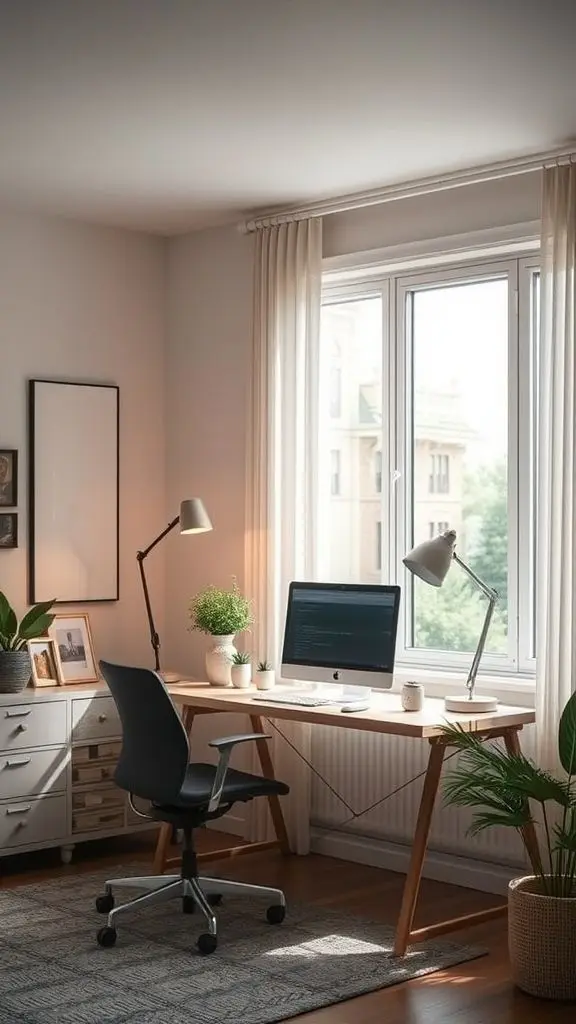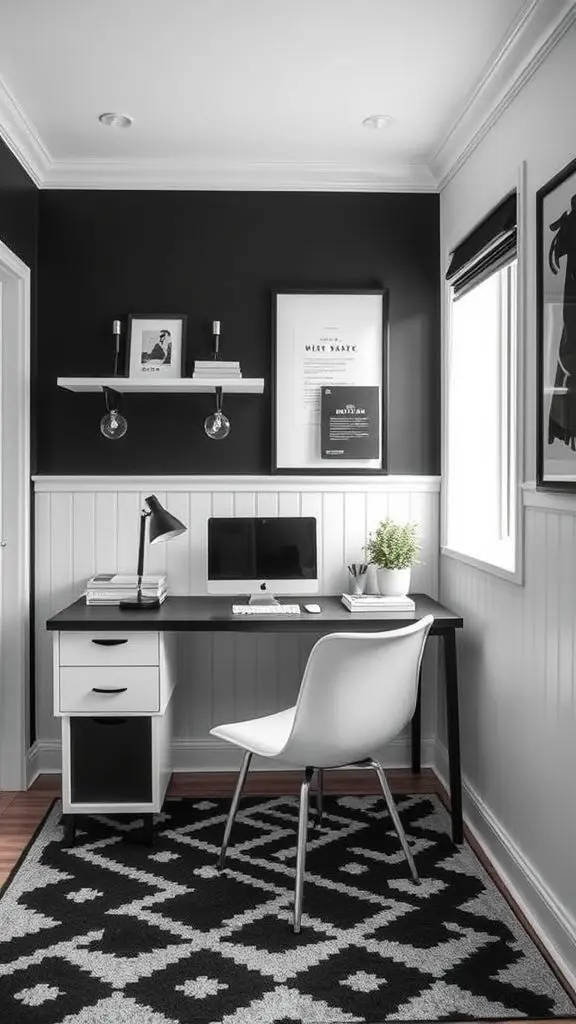Working from home has become a way of life for many of us, and honestly, there’s nothing worse than sitting in a sterile, boring workstation all day.
I’ve learnt this the hard way after spending months at a chilly, stark desk that made me feel more depleted than invigorated.
Your home office should be a sanctuary where creativity flows and productivity flourishes.
Creating a pleasant environment doesn’t mean forsaking professionalism—it means building a setting that fosters both your job and your well-being.
Let’s examine some amazing methods to change your workstation into a warm, welcoming sanctuary that you’ll genuinely look forward to spending time in.
1. Bringing the Outdoors In with Natural Elements and Sunlight
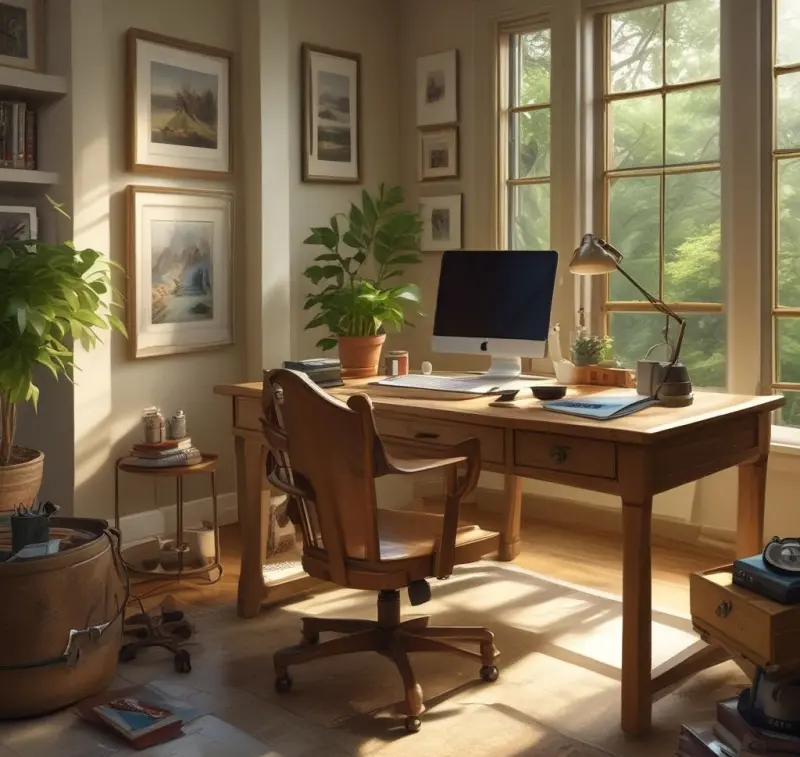
There’s something lovely about natural light coming into your desk.
Position your workstation near a window if feasible, and monitor how the shifting light throughout the day impacts your mood and energy levels.
Natural materials like wooden desk accessories, stone paperweights, or bamboo organizers offer warmth and character to your environment.
Consider adding a modest water feature nearby—the peaceful sound of running water can be immensely comforting during hectic workdays.
Raw materials give an organic vibe that ties you to nature, even while you’re confined inside. This strategy works particularly well if you have a view of trees or gardens outdoors.
2. Setting the Mood with Gentle Task Lighting
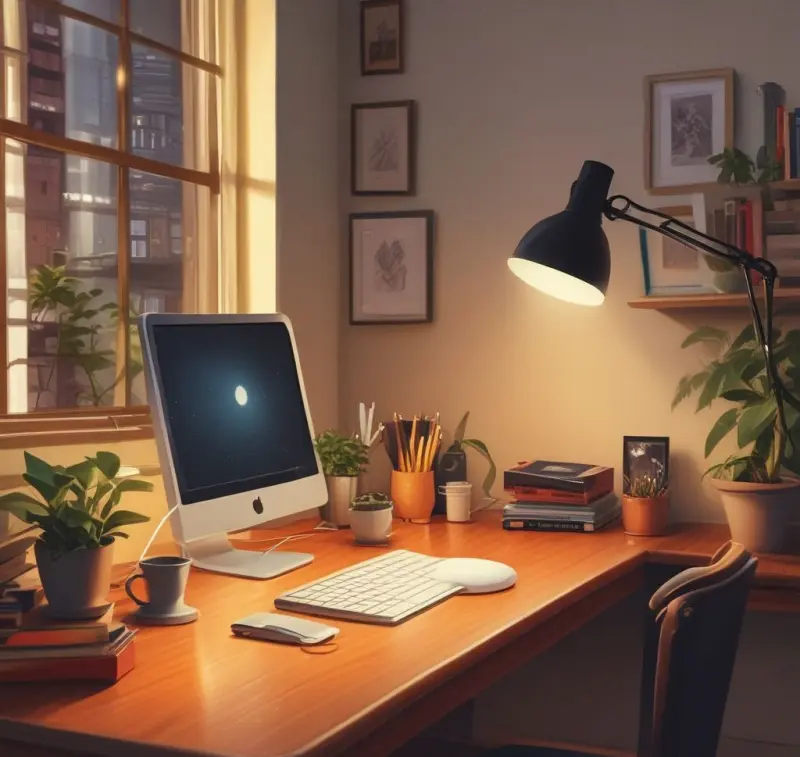
Harsh overhead fluorescents are the enemy of cosiness.
Instead, layer your lighting with warm-toned desk lamps, string lights, and even a salt lamp for that beautiful amber glow.
A decent desk lamp with adjustable brightness is essential—you need sufficient illumination for serious work, but softer alternatives for leisure periods.
Table lamps with cloth shades generate pools of soft light that make your environment seem cozy rather than clinical.
Don’t forget about candles for those late afternoon work sessions when you want to create a genuinely serene ambiance.
The trick is having numerous light sources that you may alter depending on your mood and tasks.
3. Smart Storage Solutions that Look Beautiful Too
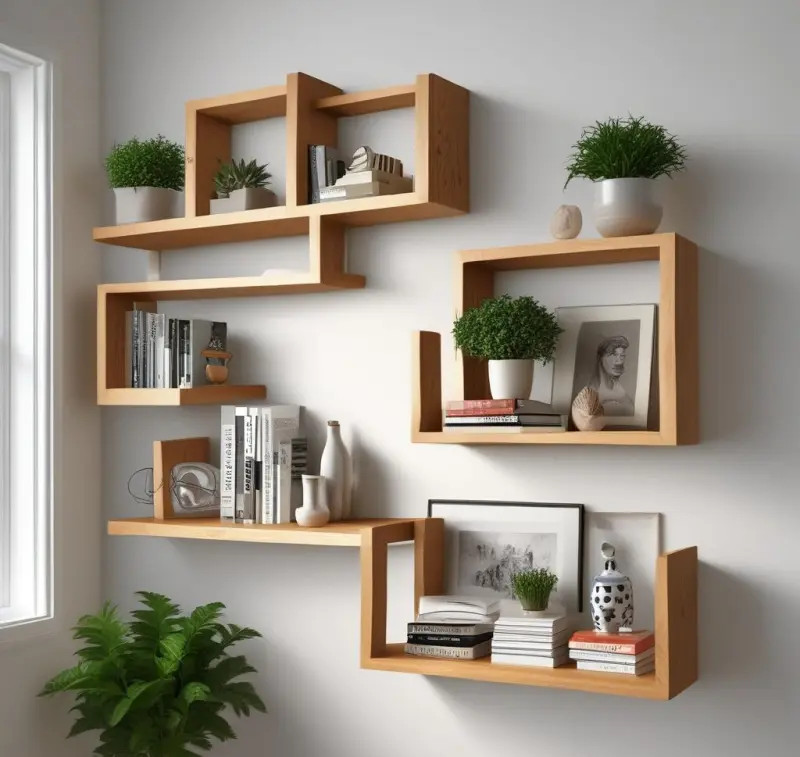
Modern bookshelf doesn’t have to seem sterile or dull.
Floating hardwood shelves with live-edge accents provide charm to your walls while keeping basics within reach.
Mix open storage with closed options—display your favorite books and plants on open shelves, while concealing less appealing stuff in beautiful baskets or boxes.
Built-in shelving painted in soft, warm hues may make a stunning background for your workstation.
I’ve discovered that having specific spaces for things really decreases stress and makes me more productive.
Consider adding little ornamental boxes or antique containers to keep smaller objects tidy while preserving that homey vibe.
4. Plants and Warm Light: The Perfect Partnership
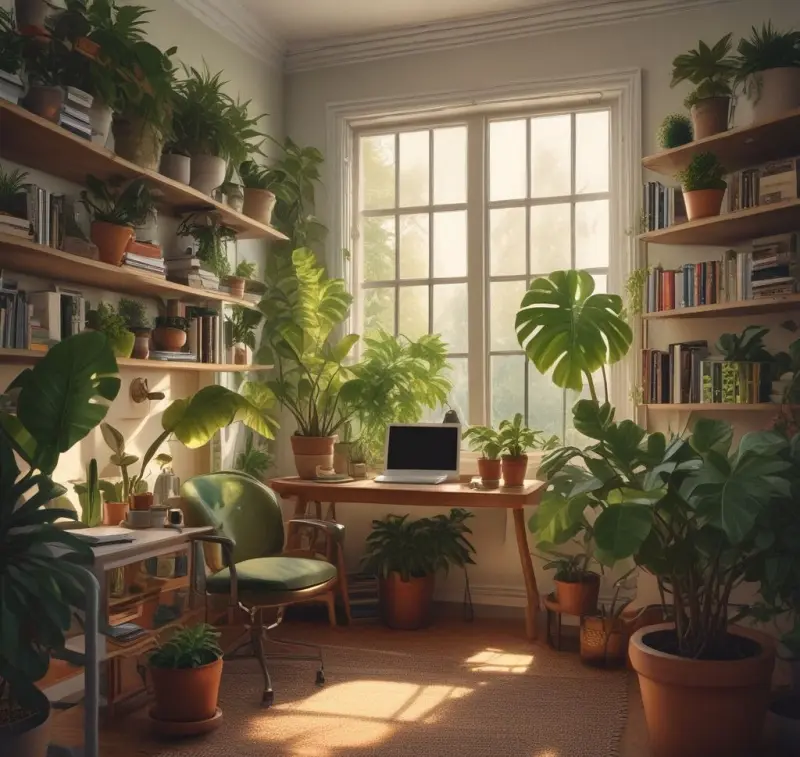
Nothing screams comfortable like the mix of lush foliage and golden lighting.
Position a statement plant like a fiddle leaf fig or monstera near your workstation, then add smaller plants on shelves and windowsills.
The trick is picking plants that survive in your exact light conditions—there’s nothing comfortable about dead plants!
Combine your foliage with warm Edison bulb lights or copper-toned lighting for a really spectacular impact.
Plants not only cleanse the air but also provide life and movement to your area.
Even if you don’t have a green thumb, low-maintenance choices like pothos, snake plants, or succulents may still produce that fresh, natural sensation.
5. Making the Most of Your Cosy Workspace Corner
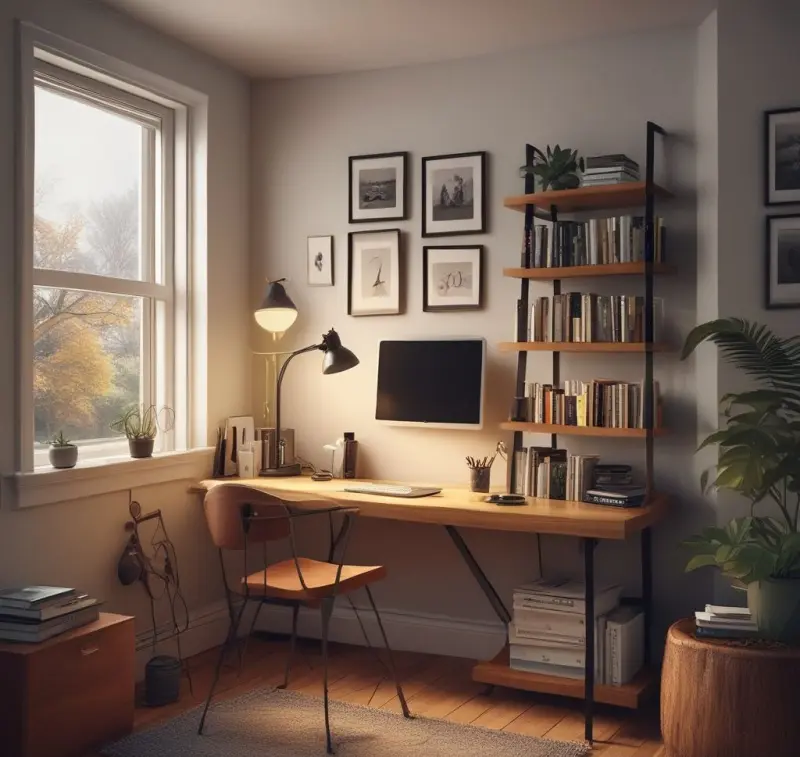
Not everyone has a dedicated office area, but that doesn’t mean you can’t create a comfortable workstation.
A section of your living room or bedroom may be converted into a creative retreat with the appropriate attitude.
Use a room divider or bookcase to create separation, and pick furniture that compliments your current design.
A tiny, circular table might seem more personal than a huge rectangular workstation, particularly in cramped areas.
Add a nice chair with soft cushions, and suddenly your nook seems like a hideaway.
Good organization is vital in compact spaces—vertical storage and multi-functional furniture are your greatest friends.
6. Warm Textures and Colors for Ultimate Comfort
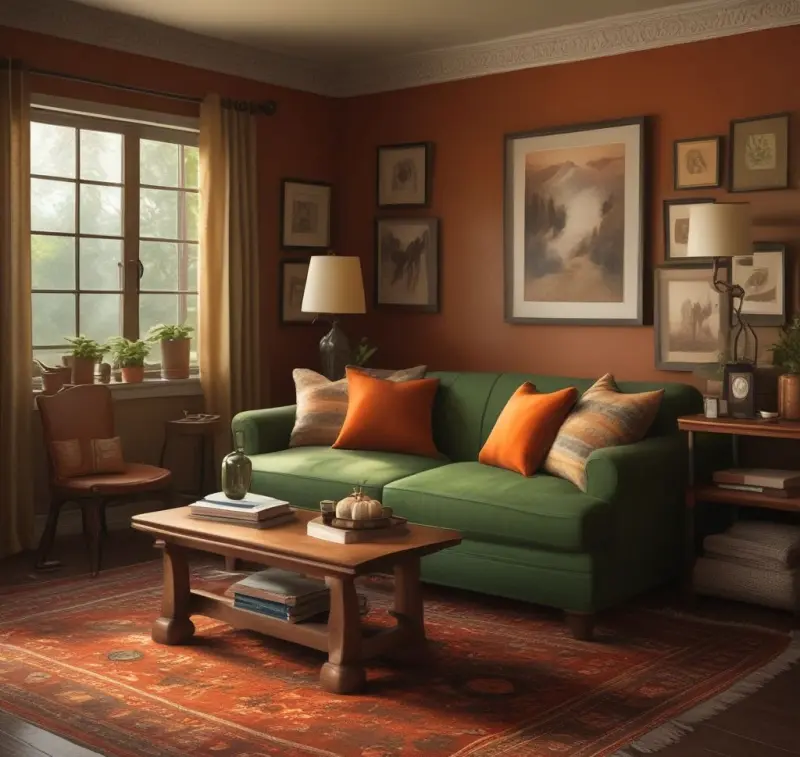
Creating cosiness is all about blending warm materials and appealing hues.
Think soft throw cushions on your chair, a plush area rug beneath your desk, or perhaps a cashmere blanket hanging nearby for cold mornings.
Rich, earthy tones like terracotta, sage green, or warm grays offer a calming palette that won’t distract from your work.
Wooden elements in honey or walnut tones give natural warmth that makes any place seem more welcoming.
Don’t be afraid to blend textures—smooth ceramics, rough-hewn wood, and soft textiles all work together to create depth and intrigue.
7. Timeless Elements for Enduring Appeal
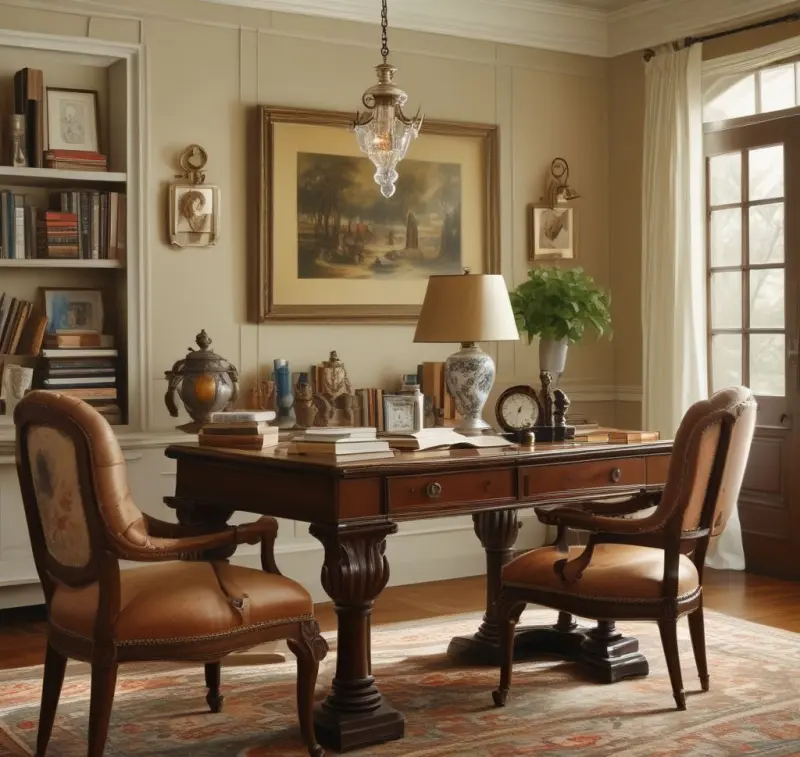
Classic design features never go out of style and offer a feeling of stability that’s immensely comfortable.
Think old hardwood furniture, vintage-inspired accessories, or classic patterns like tweeds or plaids in soft furnishings.
A magnificent antique desk or vintage lamp may become the main point of your home while adding character and history.
Quality materials like solid wood, brass hardware, and real leather age beautifully and create character over time.
This method provides a workstation that seems established and reliable—qualities that might really enhance your confidence and attention.
8. Embracing Simplicity with Scandinavian-Inspired Design
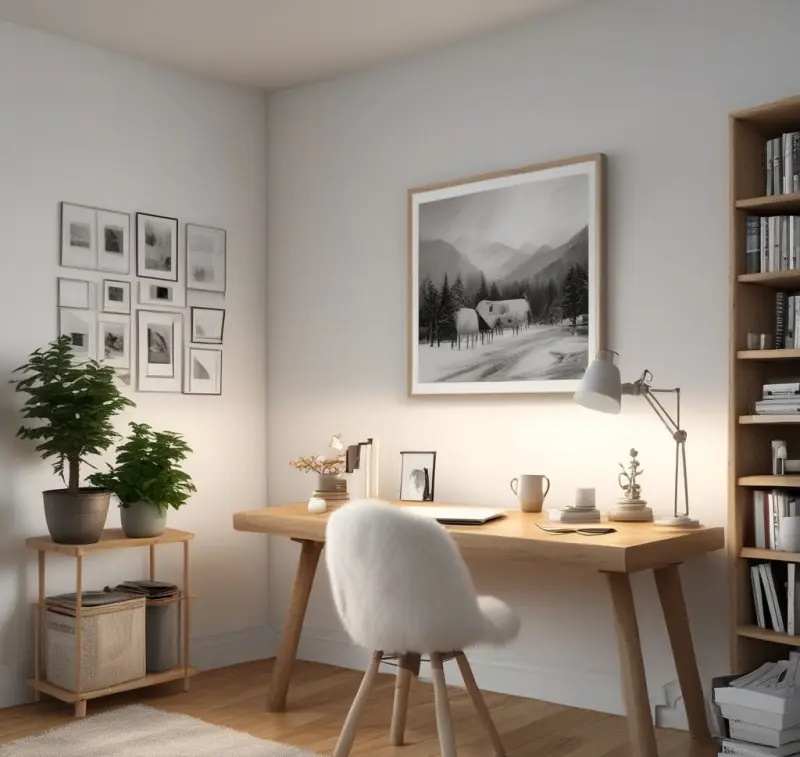
Sometimes less truly is more. Scandinavian design ideas emphasize on utility, natural materials, and clean lines while preserving tremendous warmth and cosiness.
A modest wooden desk, white walls, and well selected accessories may create a tranquil setting that enhances focus.
The trick is in the details—a sheepskin thrown over your chair, a porcelain cup for your morning coffee, or a simple vase with fresh branches.
This design works especially effectively in smaller rooms where clutter may be overpowering.
Choose quality above quantity, and allow each item serve both a utilitarian and aesthetic purpose.
9. Maximizing Daylight for Energy and Warmth
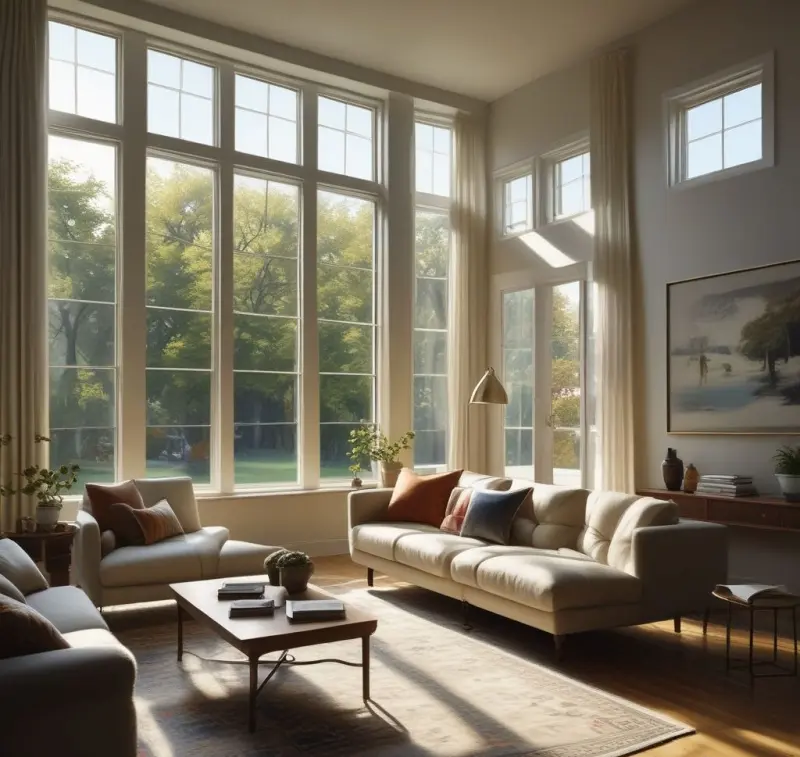
Natural light is the best mood enhancer and energy source.
If you’re fortunate enough to have enormous windows, make them the focus of your workplace design.
Sheer drapes may attenuate harsh sunlight while providing seclusion and that dreamy, filtered light look.
Mirrors properly placed opposite windows may bounce light about the room and make your space appear bigger and brighter.
Even north-facing windows give excellent, continuous light throughout the day.
If natural light is restricted, pick warm-white LED lights and enough of them—your eyes and mood will thank you during those long winter work sessions.
10. Clean Lines Meet Cosy Comfort
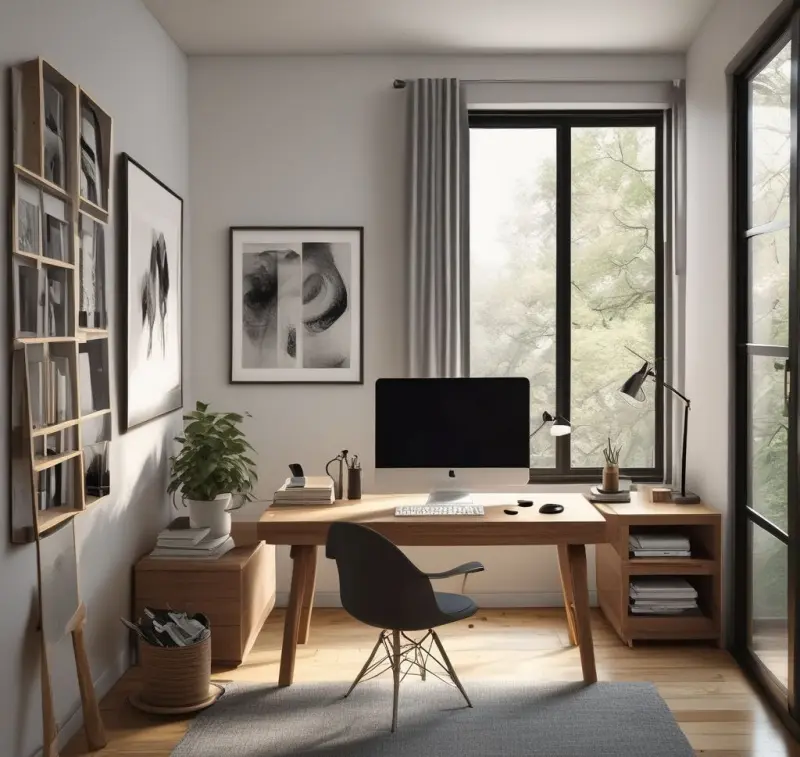
Minimalist doesn’t have to imply chilly or unwelcoming.
The secret is picking furniture and accessories with basic, clear lines yet in warm materials and hues.
A sleek wooden desk coupled with a comfy, well-cushioned chair gives the right blend of design and comfort.
Keep surfaces relatively uncluttered, but don’t be hesitant to exhibit a few special objects—a cherished picture, a tiny plant, or a lovely piece of pottery.
This method produces an environment that seems both polished and friendly, professional but personal.
11. Natural Wood and Organic Shapes for Warmth
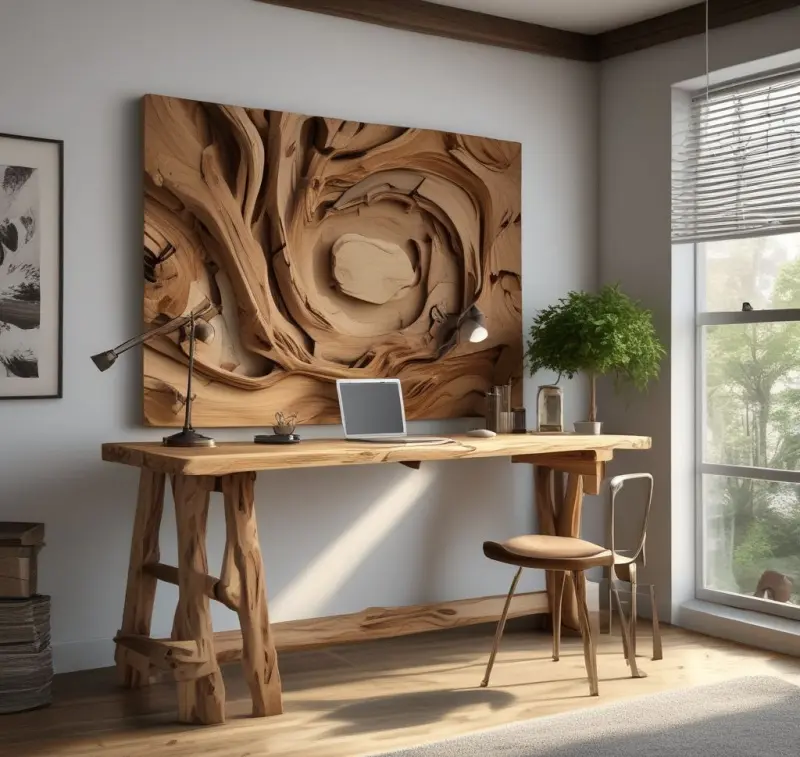
Incorporating natural wood features quickly adds warmth and character to any area.
Look for items with unusual grain patterns, living edges, or distinctive forms that highlight the natural nature of the wood.
A salvaged wood desk or floating shelves constructed from driftwood may become conversation starters while fulfilling practical needs.
Pair wooden pieces with other natural materials like stone, clay, or woven baskets for a coherent, organic vibe.
The faults and differences in natural materials give character that mass-produced objects just can’t duplicate. This method generates a workplace that feels grounded and real.
12. Garden Views and Natural Inspiration
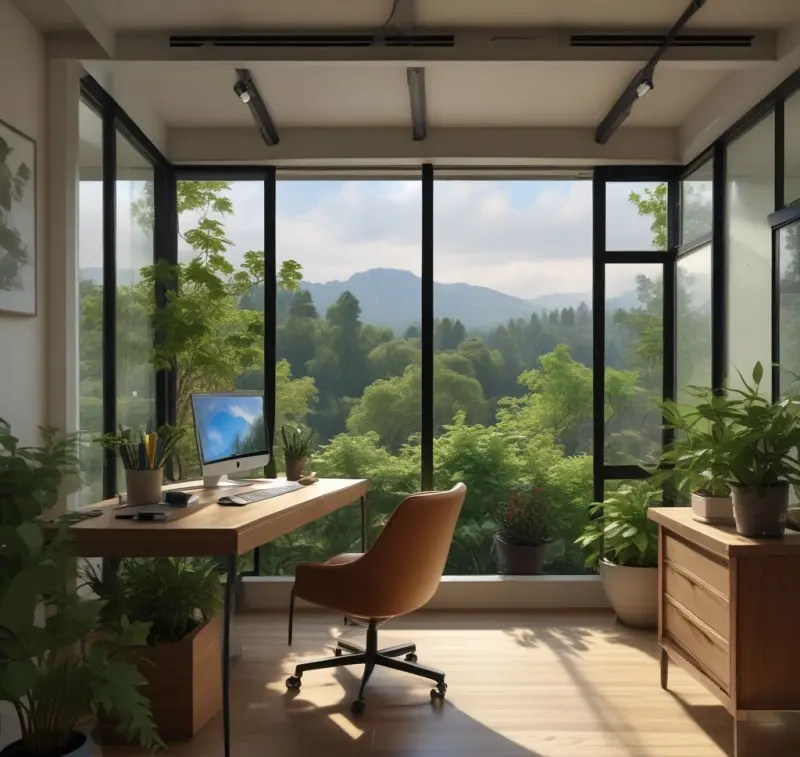
If you’re lucky enough to have a view of greenery, make it the highlight of your workplace decor.
Position your workstation to take advantage of garden vistas, changing seasons, and natural light patterns.
Even a modest balcony with potted plants or herbs may give that link to nature that makes working from home seem less solitary.
Create indoor-outdoor flow by employing similar color palettes inside and out, or by bringing outdoor furniture inside for a new viewpoint.
Window boxes stocked with seasonal flowers or herbs may bring inspiration and natural aroma throughout your workplace.
FAQs
How can I make a modest home office seem pleasant without dominating the space?
Focus on vertical storage and bright colors to keep the area feeling open. Add warmth with textiles like a soft rug or throw cushion, and utilize warm lighting instead of overhead bulbs. One or two well-chosen plants may provide liveliness without cluttering.
What’s the ideal lighting for a pleasant home office?
Layer diverse light sources including natural light, a nice desk lamp, and ambient lighting like table lamps or string lights. Warm-white bulbs (2700K-3000K) provide a warm ambiance while yet delivering adequate light for work activities.
How do I pick plants for my home office?
Consider your light conditions first—low-light plants like pothos or snake plants perform well in gloomy nooks, whereas succulents demand intense light. Choose plants depending on your care preferences and available space. Start small and add more as you develop confidence.
What colors work best for a pleasant home office?
Warm, earthy tones like sage green, warm gray, cream, and gentle browns create a comforting environment. You may also use them as highlights against white or light neutral walls. Avoid bright, exciting hues that could be distracting during work hours.
How can I generate privacy in an open-plan home office area?
Use room dividers, bookshelves, or even huge plants to establish visual separation. A folding screen may give flexibility, while a bookshelf provides double purpose as storage and divider. Consider hanging curtains or constructing a barn door for more permanent alternatives.
Conclusion
Creating a pleasant home office is about more than simply aesthetics—it’s about designing a setting that promotes your well-being and productivity.
The greatest workplaces seem like an extension of your personality while being utilitarian for everyday work demands.
Small adjustments like improved lighting, a few plants, or softer textures may radically impact how you feel about your workstation.
Remember, your workplace should change with your requirements and tastes, so don’t be hesitant to experiment and adapt over time.
Start with one or two items that connect with you, and gradually develop your own snug refuge.
